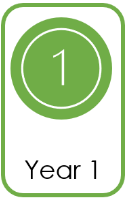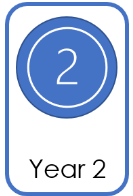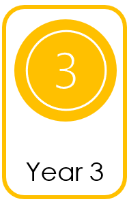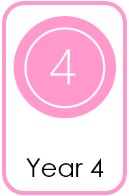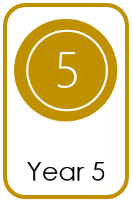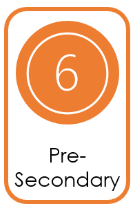Mathematics
The National Curriculum states: Mathematics is a creative and highly inter-connected discipline that has been developed over centuries, providing the solution to some of history’s most intriguing problems. It is essential to everyday life, critical to science, technology and engineering, and necessary for financial literacy and most forms of employment. A high-quality mathematics education therefore provides a foundation for understanding the world, the ability to reason mathematically, an appreciation of the beauty and power of mathematics, and a sense of enjoyment and curiosity about the subject.
Aims of the National Curriculum:
- Problem solving - Pupils use mathematical concepts they have learnt to solve complex problems and apply knowledge to real-life situations.
- Reasoning - It is very important pupils speak and write about mathematics. Pupils learn to explain their mathematics in full sentences. For example, they learn to explain how they know an answer is right.
- Fluency - It is important that pupils recall facts promptly and apply mathematical knowledge accurately. To help them do this, pupils are learning to make connections in Mathematics.
How do we teach mathematics at John Keble?
To ensure whole school consistency and progression, at John Keble we use the DfE approved ‘Power Maths White Rose’ scheme to support the teaching of maths. Power Maths is a whole-class, textbook-based mastery resource that empowers every child to understand and succeed. Power Maths rejects the notion that some people simply ‘can’t’ do maths. Instead, it develops growth mindsets and encourages hard work, practice and a willingness to see mistakes as learning tools. The scheme focuses on pupil-centred learning, where through the Concrete>Pictorial>Abstract (C-P-A) approach, pupils master concepts one step at a time in lessons. We believe that it is vital that pupils fully understand key number concepts and not just memorise a process.
-
Concrete – pupils use objects to help them understand and explain their Maths learning
-
Pictorial – pupils use pictures to represent their understanding
-
Abstract – when pupils can explain and show their understanding, they can move on to represent their understanding using numbers and symbols.
Together, these elements help pupils fully understand what they’ve learnt, so they can explain and show their understanding with objects, pictures and real-life examples. Objects and pictures are used to demonstrate and visualise ideas, alongside numbers and symbols. An interactive, whole-class teaching model encourages thinking and precise mathematical language and allows pupils to deepen their understanding as far as they can.
Structure of a lesson.
-
Power up - The lesson begins with a fluency task to build on prior learning and consolidate number facts.
-
Discover - In this section, pupils are presented with a problem and some focused questions, through which they share, explore and learn. Pupils take ownership of their own learning and consider how to show their understanding in different ways.
-
Share activity - This is a whole-class, interactive learning phase in which pupils share their thinking and identify the best ways to solve a problem.
-
Think together - This part of the lesson begins with a teacher-guided question, followed by a problem for pupils to solve in pairs, followed by an independent question. This section develops the problem using the Concrete – Pictorial – Abstract approach and there is clear progression within each lesson.
-
Practice – Pupils are provided with activities and questions to apply and practise what they have learnt. The questions are designed to help pupils understand the key features of each concept and build their fluency. Each lesson has an ‘Even Deeper’ challenge question, ensuring greater depth opportunities are available for the higher attaining children.
-
Reflect - This section involves everyone looking back on what they feel they’ve each learnt, helping pupils to understand and consolidate their learning.
-
Support - The teacher guides are clearly set out. Each unit begins with a starter page, explaining what pupils will learn and establishing that they have the prior knowledge required using some sample problems. It also introduces any essential vocabulary.
Through the mastery and growth mindset approach of Power Maths, at John Keble we desire our pupils to become confident and capable mathematicians who are able to understand the importance of maths to their future and in the wider world. Over the course of their school journey, pupils will have developed new knowledge, understanding and skills which they can use and recall this with fluency. They will have achieved appropriately for their age and be ready to take on the challenges of their next chapters in education and life.







